Landscape Gardening in Walthamstow: Transforming Your Outdoor Spaces
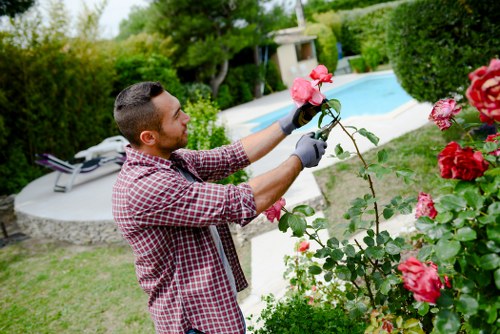
Introduction to Landscape Gardening
Landscape gardening is an art and science that combines horticulture, design, and environmental stewardship to create beautiful and functional outdoor spaces. In Walthamstow, a vibrant area in East London known for its rich history and green spaces, landscape gardening plays a crucial role in enhancing residential and commercial properties alike.
Whether you're looking to revamp your garden, create a serene outdoor retreat, or design a sustainable landscape, understanding the fundamentals of landscape gardening in Walthamstow can help you achieve your goals. This article explores the various aspects of landscape gardening specific to Walthamstow’s unique environment.
From selecting the right plants to incorporating modern design elements, we'll guide you through the process of creating a stunning landscape that complements the local climate and community aesthetics.
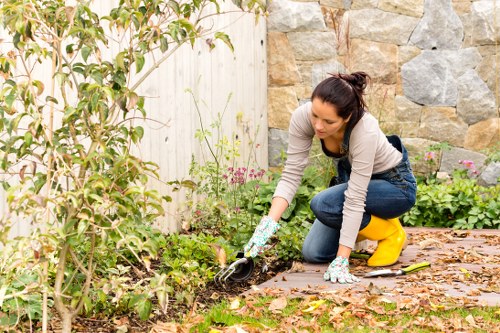
Understanding the Local Climate and Soil
Climate Considerations
Walthamstow experiences a temperate maritime climate, characterized by mild winters and cool summers. This climate is conducive to a wide variety of plants, both native and exotic. When planning your landscape garden, it's essential to choose plants that thrive in these conditions to ensure longevity and minimal maintenance.
The region receives adequate rainfall throughout the year, which supports lush greenery. However, understanding seasonal variations can help in selecting plants that will provide year-round interest and resilience against occasional droughts or heavy rains.
Additionally, incorporating seasonal plants can add color and vibrancy to your garden, making it a dynamic space that changes with the seasons.
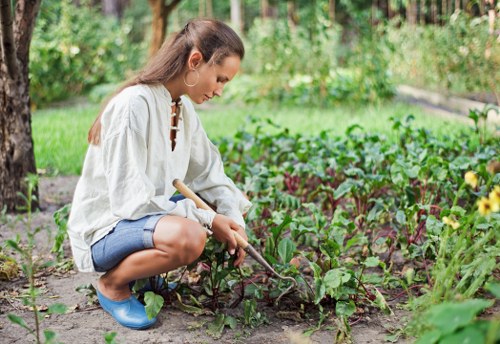
Soil Composition and Preparation
Testing Your Soil
Before embarking on any landscaping project, it's crucial to assess the quality of your soil. Conducting a soil test will provide insights into the pH levels, nutrient content, and composition, allowing you to amend the soil appropriately for optimal plant growth.
In Walthamstow, soils can vary from clay-heavy to sandy, each requiring different preparation techniques. Clay soils retain water but may become compacted, while sandy soils drain quickly but may lack essential nutrients.
Improving soil structure through the addition of organic matter, such as compost or well-rotted manure, can enhance fertility and drainage, creating a healthy foundation for your garden.
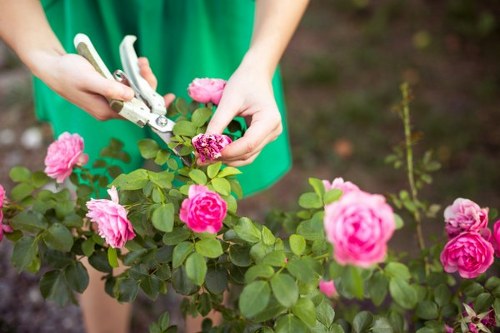
Choosing the Right Plants for Your Garden
Native vs. Exotic Plants
Selecting the appropriate plants is vital for the success of your landscape garden. Native plants are well-adapted to the local climate and soil conditions, making them easier to maintain and more resilient against pests and diseases.
Common native plants in Walthamstow include lavender, foxgloves, and various types of ornamental grasses. These plants not only require less water and care but also support local wildlife, including pollinators like bees and butterflies.
Exotic plants, on the other hand, can add unique textures and colors to your garden. However, they may require more attention in terms of watering, fertilizing, and protection from local pests. Balancing native and exotic plants can create a diverse and visually appealing landscape.
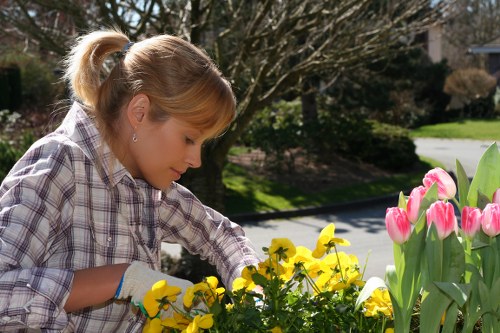
Design Principles for Effective Landscape Gardening
Balance and Symmetry
Achieving a sense of balance and symmetry is fundamental in landscape design. This doesn't necessarily mean everything has to be mirrored, but rather that the elements within the garden complement each other to create harmony.
In Walthamstow, incorporating a mix of structured and natural elements can provide a balanced look. For instance, pairing a formal pathway with a more wildflower meadow can create an interesting juxtaposition that enhances the garden's overall appeal.
Moreover, considering the scale and proportion of different elements ensures that no single part of the garden overwhelms the rest, maintaining a cohesive and pleasing environment.

Focal Points and Pathways
Creating focal points, such as a feature tree, a water fountain, or a sculpture, draws the eye and adds interest to your garden. In Walthamstow’s urban setting, a well-placed focal point can serve as a centerpiece, anchoring the space and guiding visitors through the landscape.
Pathways not only provide structure but also facilitate movement within the garden. Using materials like stone, gravel, or timber can enhance the aesthetic appeal while ensuring functionality.
Strategically placed pathways and focal points can transform a simple garden into a thoughtfully designed outdoor space that invites exploration and relaxation.

Incorporating Sustainable Practices
Water Conservation
Incorporating sustainable practices in landscape gardening is essential for environmental stewardship. Water conservation is a key aspect, especially in regions where water resources may be limited or prone to irregular rainfall patterns.
Implementing rainwater harvesting systems, such as rain barrels or underground cisterns, can collect and store rainwater for irrigation purposes. Using drip irrigation or soaker hoses ensures that water is delivered directly to the plant roots, minimizing evaporation and waste.
Choosing drought-tolerant plants and mulching around them can further reduce water usage, promoting a sustainable and resilient garden.

Eco-friendly Materials
Selecting eco-friendly materials for your garden structures and features contributes to sustainability. Opting for recycled or locally sourced materials reduces the environmental impact and supports the local economy.
For example, using reclaimed timber for garden borders or benches not only adds character but also minimizes the demand for new resources. Similarly, choosing permeable paving materials allows rainwater to infiltrate the soil, reducing runoff and preventing erosion.
Incorporating sustainable materials aligns your landscape gardening efforts with broader environmental goals, creating a garden that is both beautiful and responsible.

Enhancing Biodiversity
Supporting Wildlife
A diverse and healthy garden supports local wildlife, including birds, insects, and beneficial mammals. Planting a variety of species ensures that different habitat needs are met, providing food, shelter, and nesting sites for various creatures.
In Walthamstow, creating a wildlife-friendly garden can contribute to the broader ecological health of the area. Incorporating features like birdhouses, insect hotels, and native plants encourages biodiversity and fosters a thriving ecosystem.
Additionally, a biodiverse garden is more resilient against pests and diseases, as the natural balance helps keep harmful populations in check.

Pollinator Gardens
Pollinator gardens are designed to attract and support bees, butterflies, and other pollinating insects. These gardens typically feature a variety of nectar-rich flowers that provide essential food sources throughout the growing season.
In Walthamstow, establishing a pollinator garden can enhance the beauty of your landscape while contributing to the health of local pollinator populations. Plants such as lavender, salvia, and butterfly bush are excellent choices for attracting pollinators.
By creating a haven for pollinators, you not only support the ecosystem but also increase the productivity of your garden by promoting better plant pollination and fruit set.

Outdoor Living Spaces
Creating Functional Areas
Modern landscape gardening in Walthamstow often includes the creation of outdoor living spaces that extend the functionality of the home. Areas such as patios, decks, and outdoor kitchens provide spaces for relaxation, entertainment, and dining in a natural setting.
Designing these functional areas involves careful planning to ensure they blend seamlessly with the surrounding landscape. Using materials that complement the garden’s aesthetic and incorporating comfortable furnishings can enhance the usability and appeal of these spaces.
Outdoor lighting, fire pits, and shade structures further add to the functionality, allowing the space to be enjoyed throughout the day and into the evening.

Seating and Gathering Areas
Designing seating and gathering areas within your landscape garden encourages social interaction and provides spaces for relaxation. Benches, hammocks, and pergolas are popular choices for creating inviting spots to unwind.
In Walthamstow’s climate, providing shelter from the elements is important. Incorporating awnings, umbrellas, or trellises with climbing plants can offer shade and protection from rain, making outdoor spaces more comfortable year-round.
Thoughtfully placed seating areas can become focal points, enhancing the overall flow and functionality of your garden.

Seasonal Garden Maintenance
Spring Preparation
Spring is an ideal time to prepare your landscape garden for the growing season. This involves cleaning up any debris, pruning overgrown plants, and fertilizing the soil to provide essential nutrients for new growth.
Planting spring-flowering bulbs, perennials, and annuals can add vibrant colors and ensure a lively garden throughout the season. Additionally, starting a compost pile can help recycle garden waste and create organic matter for soil enrichment.
Regular maintenance during spring sets the foundation for a healthy and flourishing garden all year long.

Summer Care
Summer gardens require diligent care to withstand the heat and ensure plants remain healthy. This includes consistent watering, especially for newly planted and drought-sensitive species.
Mulching around plants helps retain moisture, regulate soil temperature, and suppress weed growth. Additionally, regular weeding and monitoring for pests are essential to maintain garden health.
Pruning and deadheading spent flowers encourage continuous blooming and prevent plants from becoming leggy or overgrown.

Autumn and Winter Maintenance
As the seasons change, autumn is the time to prepare your garden for the cooler months. This involves planting autumn-flowering plants, harvesting late vegetables, and clearing fallen leaves to prevent disease.
Winterizing your garden includes protecting sensitive plants from frost, adding mulch to insulate the soil, and pruning dormant trees and shrubs to promote healthy growth in the spring.
Proper seasonal maintenance ensures that your landscape garden remains resilient and ready to thrive in the coming year.

Hiring Professional Landscape Gardeners
Benefits of Professional Services
While DIY gardening can be rewarding, hiring professional landscape gardeners in Walthamstow offers numerous advantages. Professionals bring expertise in design, plant selection, and maintenance, ensuring that your garden is both beautiful and functional.
They can provide tailored solutions that meet your specific needs and preferences, from creating custom garden layouts to implementing sustainable practices. Additionally, professionals have access to specialized tools and resources that can enhance the quality and efficiency of the work.
Investing in professional services can save you time and effort, allowing you to enjoy a well-maintained garden without the stress of managing it yourself.

Choosing the Right Gardener
Selecting the right landscape gardener is crucial for achieving the desired results. When looking for professionals in Walthamstow, consider their experience, portfolio, and client reviews to gauge their expertise and reliability.
Ensure that the gardener you choose is familiar with local plant species and climate conditions, as this knowledge is essential for creating a sustainable and thriving garden.
Additionally, clear communication about your vision, budget, and timeline is important to ensure that the project proceeds smoothly and meets your expectations.

Cost Considerations
Budget Planning
Landscape gardening can be a significant investment, and proper budget planning is essential to avoid unexpected expenses. Start by outlining your goals and priorities, determining which aspects of the garden are most important to you.
Consider costs associated with design, materials, plants, and labor. Obtaining multiple quotes from different gardeners can help you compare prices and find a service that fits within your budget.
Additionally, setting aside a contingency fund for unforeseen expenses ensures that your project can be completed without financial strain.

Cost-Saving Tips
There are several ways to manage costs while still achieving a beautiful landscape garden in Walthamstow. One approach is to prioritize key areas and gradually expand your garden over time, spreading out expenses as needed.
Using native plants and recycled materials can reduce costs, as they often require less maintenance and are more affordable than exotic species and new materials.
Additionally, incorporating DIY elements, such as building your own raised beds or installing simple garden features, can further decrease labor costs while adding a personal touch to your garden.

Maximizing Small Garden Spaces
Vertical Gardening
In urban areas like Walthamstow, space can be limited. Vertical gardening is an effective way to maximize your garden’s potential by utilizing vertical space for planting. This can be achieved through trellises, wall-mounted planters, or green walls.
Vertical gardens not only save space but also add a striking visual element to your landscape. They can be used to grow vegetables, herbs, or ornamental plants, providing both functional and aesthetic benefits.
Additionally, vertical gardening can improve air quality and provide insulation, contributing to a healthier and more comfortable outdoor environment.

Compact Plant Selection
Choosing compact and multi-functional plants is key to maximizing small garden spaces. Dwarf varieties of shrubs, trees, and perennials take up less space while still offering beauty and structure to your garden.
Container gardening is another excellent option for small spaces, allowing you to grow a variety of plants without the need for extensive ground space. Using containers also provides flexibility, as plants can be moved or rearranged as needed.
Strategic plant placement, such as planting taller species at the back and shorter ones in front, can create depth and dimension, making the most of the available space.

Incorporating Hardscapes
Paths and Patios
Hardscapes, including paths, patios, and fences, add structure and functionality to your landscape garden. In Walthamstow, incorporating hardscapes can create defined areas for different activities and enhance the overall design.
Paths made of stone, brick, or gravel guide visitors through the garden, while patios provide a space for outdoor dining and relaxation. Selecting materials that complement your garden’s aesthetic ensures a cohesive look.
Properly integrated hardscapes not only improve the garden’s usability but also contribute to its visual appeal, creating a balanced and inviting outdoor space.

Water Features and Lighting
Incorporating water features, such as ponds, fountains, or waterfalls, adds a soothing element to your landscape garden. The sound of running water creates a tranquil atmosphere, enhancing the overall ambiance of your outdoor space.
Outdoor lighting is another essential hardscape element that extends the usability of your garden into the evening hours. Well-placed lights highlight key features, illuminate pathways, and provide safety and security.
Solar-powered and energy-efficient lighting options are ideal for sustainable landscaping, reducing energy consumption while maintaining functionality and beauty.

Choosing the Right Tools and Equipment
Essential Gardening Tools
Having the right tools is essential for effective landscape gardening in Walthamstow. Basic gardening tools include shovels, rakes, pruners, and hoes, which are necessary for planting, weeding, and maintaining your garden.
Investing in high-quality tools ensures durability and ease of use, making gardening tasks more efficient and enjoyable. Ergonomic designs can also reduce the strain on your hands and back, allowing for longer and more productive gardening sessions.
Proper tool maintenance, such as cleaning and sharpening blades, extends the lifespan of your equipment and ensures optimal performance.

Advanced Equipment
For larger or more complex landscaping projects, advanced equipment may be necessary. Items such as lawnmowers, tillers, and hedge trimmers can significantly reduce the time and effort required for maintenance.
Power tools and machinery should be used with caution, following safety guidelines to prevent accidents and ensure longevity. Renting equipment for specific tasks can also be a cost-effective option for one-time projects.
Incorporating the right equipment into your gardening routine enhances efficiency and helps maintain a healthy and attractive landscape.

Integrating Technology in Landscape Gardening
Smart Irrigation Systems
Technology has revolutionized modern landscape gardening, offering innovative solutions for maintenance and sustainability. Smart irrigation systems, for example, use sensors and automated timers to optimize watering schedules based on weather conditions and soil moisture levels.
This not only conserves water but also ensures that plants receive the right amount of hydration, promoting healthier growth and reducing the risk of overwatering or underwatering.
Integrating smart irrigation systems into your Walthamstow garden can enhance efficiency and contribute to sustainable gardening practices.

Garden Management Apps
There are numerous garden management apps available that help gardeners plan, track, and maintain their gardens more effectively. These apps can provide reminders for watering, fertilizing, and pruning, as well as offer design tools for visualizing garden layouts.
Using technology to manage your garden can streamline tasks, reduce the likelihood of errors, and enhance overall garden health. Additionally, many apps offer community features where you can connect with other gardeners, share tips, and seek advice.
Embracing digital tools in your landscape gardening routine can make the process more efficient and enjoyable.

Final Thoughts on Landscape Gardening in Walthamstow
Landscape gardening in Walthamstow offers a unique opportunity to create beautiful, sustainable, and functional outdoor spaces that enhance the quality of life for residents and contribute to the area's ecological health. By understanding the local climate and soil, selecting the right plants, incorporating sustainable practices, and utilizing both traditional and modern gardening techniques, you can transform your garden into a welcoming and thriving environment.
Whether you're a seasoned gardener or a beginner, taking the time to plan and execute a thoughtful landscape garden can yield rewarding results that bring joy and beauty for years to come.
Contact us today to start your landscape gardening journey in Walthamstow and turn your outdoor dreams into reality.

